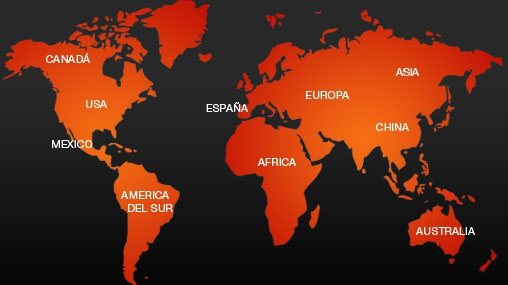- Inicio Acerca de RM Minerales
- Galería de fotos Blog RM Contacto
- Microscopia e instrumentos Pedidos Aviso legal
Copyright 2010-2025
www.rosellminerals.com



Muy interesante combinación formada por un nódulo de tinticita con algún pequeño agregado de calcioferrita. La calcioferrita muestra agregados globulares de color verde oliva, con cristales radiados, incluidos en matriz de tinticita. Estos especímenes han sido analizados por SEM-EDS y XRD y enviaremos todos los detalles al comprador. De esta clásica mina catalana.
En este ejemplar podemos ver un grupo de cristales de fluorita azulada parcialmente recubiertos por una drusa de cristales de cuarzo diminutos pero muy brillantes.
Ejemplar de muy buen tamaño de fluorita de esta clásica mina catalana. Sobre la antigua matriz de granodiorita anaranjada se disponen diversos grupos de cristales, alguno de ellos aislados, con formas octaédricas. Presentan un brillo semi mate y un color verde uniforme. Muy fluorescente bajo la luz UV-OC. Los ejemplares de fluorita de esta cantera son muy apreciados por los coleccionistas.
Las minas de fluorita del Matagalls se hallan en el macizo del Montseny. Son bien conocidas por la fluorita, pero también por los cristales de cuarzo de la variedad amatista como los que mostramos en este ejemplar. Sobre una matriz tapizada por cristales de fluorita de tono verde amarillento se disponen numerosos cristales de amatista, parcialmente recubiertos por pequeños cristales de calcita muy brillantes.
Los ejemplares de barita de esta clásica mina catalana son poco habituales en el mercado. En esta pieza podemos observar un nutrido grupo de cristales interpenetrados, destacando algunos de ellos con las caras bien visibles. Presentan un color ligeramente amarillento y son traslúcidos. Este ejemplar procede de la colección Joan Astor.
Cerca de la costa de la ciudad de Barcelona se halla este promontorio histórico y geológicamente muy interesante como es la montaña de Montjuïc. El ejemplar que proponemos es un xilópalo en el que podemos observar estructuras de la madera original. Estos ejemplares son ya tan históricos como la montaña de donde salieron...
La willemita de Sant Fost se presenta en pequeños cristales de hábito prismático pseudohexagonal (maclas), con las caras estriadas. Todos ellos son de tamaño submilimétrico y forman drusas de cristales de brillo resinoso o adamantino, con colores que van del marrón oscuro al amarillo miel, o pueden aparecer incoloros y transparentes. En Sant Fost la willemita aparece asociada a una veta de esfalerita junto con silicatos (cuarzos y arcillas), calcita, fluorita y barita. Fluorescente bajo UV de onda corta. Localidad inusual para la especie.
Esta es una de las pocas muestras obtenidas en nuestros últimos estudios en esta cantera. Observamos unos cristales laminares, tipo mica, con brillo nacarado y formas hexagonales. Los resultados de las diferentes técnicas analíticas indicaron que se trataba de surita (SEM-EDS, EPMA, XRD, Raman). Se acompaña de cerusita, fluorita (violeta), barita y galena.
La surita es una especie muy rara cuya estructura se basa en un apilamiento de capas tipo cerusita, intercaladas con una capa 2:1 de esmectita. Can Rovira es la segunda localidad de Europa y una de las pocas localidades a nivel mundial para la especie.
La fehrita es una nueva especie encontrada recientemente en Almería (España). Hace unos años (2012) identificamos esta especie en la mina de Les Ferreres (Camprodon) pero lamentablemente no disponíamos de suficiente muestra para terminar los estudios de determinación y estructura. Recientemente encontramos algunas muestras más y la caracterización se realizó en base a los resultados obtenidos de la aplicación de diversas técnicas analíticas: SEM-EDS, Raman y XRD. La mina de Les Ferreres es la segunda localidad a nivel mundial para la especie. Enviaremos los resultados al comprador.
En esta mina catalana, la fehrita se presenta como cristales tabulares a fibrosos alargados alargados, de un delicado tono verde azulado, con terminaciones fibrosas. Suele acompañarse de devillina (azul) y brochantita (verde). Es el análogo de magnesio de la ktenasita.
La fehrita es una nueva especie encontrada recientemente en Almería (España). Hace unos años (2012) identificamos esta especie en la mina de Les Ferreres (Camprodon) pero lamentablemente no disponíamos de suficiente muestra para terminar los estudios de determinación y estructura. Recientemente encontramos algunas muestras más y la caracterización se realizó en base a los resultados obtenidos de la aplicación de diversas técnicas analíticas: SEM-EDS, Raman y XRD. La mina de Les Ferreres es la segunda localidad a nivel mundial para la especie. Enviaremos los resultados al comprador.
En esta mina catalana, la fehrita se presenta como cristales tabulares a fibrosos alargados alargados, de un delicado tono verde azulado, con terminaciones fibrosas. Suele acompañarse de devillina (azul) y brochantita (verde). Es el análogo de magnesio de la ktenasita.
Estos ejemplares de celestina son un clásico de la mineralogía catalana. Se encontraron hace décadas en fisuras en las margas carbonáticas de Els Esbornacs (palabra catalana que significa grietas producidas por desprendimientos), en la Plana de Vic. Se presentan como cristales prismáticos ortorrómbicos, transparentes a translúcidos, brillantes y con un color azul grisáceo muy característico.
Estos ejemplares de celestina son un clásico de la mineralogía catalana. Se encontraron hace décadas en fisuras en las margas carbonáticas de Els Esbornacs (palabra catalana que significa grietas producidas por desprendimientos), en la Plana de Vic. Se presentan como cristales prismáticos ortorrómbicos, transparentes a translúcidos, brillantes y con un color azul grisáceo muy característico.
Estos ejemplares de celestina son un clásico de la mineralogía catalana. Se encontraron hace décadas en fisuras en las margas carbonáticas de Els Esbornacs (palabra catalana que significa grietas producidas por desprendimientos), en la Plana de Vic. Se presentan como cristales prismáticos ortorrómbicos, transparentes a translúcidos, brillantes y con un color azul grisáceo muy característico.
Estos ejemplares de celestina son un clásico de la mineralogía catalana. Se encontraron hace décadas en fisuras en las margas carbonáticas de Els Esbornacs (palabra catalana que significa grietas producidas por desprendimientos), en la Plana de Vic. Se presentan como cristales prismáticos ortorrómbicos, transparentes a translúcidos, brillantes y con un color azul grisáceo muy característico.
Los ejemplares de huntita de esta clásica localidad catalana son difíciles de conseguir. La huntita se presenta rellenando cavidades de una matriz de pizarra ampelítica. Se trata de un carbonato de calcio y magnesio, de aspecto pulverulento, de níveo color blanco. Se acompaña de pequeños cristales aciculares de aragonito muy brillantes. La huntita se identificó mediante difracción de RX en Montcada a finales de los años 90 (Cendón et al. 1997; enlace).
Los ejemplares de huntita de esta clásica localidad catalana son difíciles de conseguir. La huntita se presenta rellenando cavidades de una matriz de pizarra ampelítica. Se trata de un carbonato de calcio y magnesio, de aspecto pulverulento, de níveo color blanco. Se acompaña de pequeños cristales aciculares de aragonito muy brillantes. La huntita se identificó mediante difracción de RX en Montcada a finales de los años 90 (Cendón et al. 1997; enlace).
Este antiguo ejemplar procede de la clásica mina Atrevida, al sur de Catalunya. Se trata de una concrección botroidal de aragonito con un ligero tono azul verdoso. Hoy día está totalmente prohibido recoger minerales ya que es un parque natural. De la colección Manchion (Barcelona), con etiqueta manuscrita de la casa Soler i Pujol.
Cristal de buen tamaño de cuarzo ahumado. Definido, brillante y con formas "fantasma" en su interior. Una pieza antigua de una localidad clásica catalana.
La fehrita es una nueva especie encontrada recientemente en Almería (España). Hace unos años (2012) identificamos esta especie en la mina de Les Ferreres (Camprodon) pero lamentablemente no disponíamos de suficiente muestra para terminar los estudios de determinación y estructura. Recientemente encontramos algunas muestras más y la caracterización se realizó en base a los resultados obtenidos de la aplicación de diversas técnicas analíticas: SEM-EDS, Raman y XRD. La mina de Les Ferreres es la segunda localidad a nivel mundial para la especie. Enviaremos los resultados al comprador.
En esta mina catalana, la fehrita se presenta como cristales tabulares a fibrosos alargados alargados, de un delicado tono verde azulado, con terminaciones fibrosas. Suele acompañarse de devillina (azul) y brochantita (verde). Es el análogo de magnesio de la ktenasita.
Los ejemplares de chorlo del Cap de Creus son bien conocidos por los coleccionistas. Este ejemplar de los años 70 del siglo pasado nos muestra un prisma estriado y las facetas de las caras terminales, cosa poco habitual. Esta zona del NE de Catalunya es ahora un parque natural y está totalmente prohibido extraer ejemplares.
Ejemplar de andalucita del Cap de Creus, de tonos rosados y bastante cristalino. El Parque Natural del Cap de Creus fue el primer parque marítimo-terrestre de Catalunya. Fue creado en 1998 y protege gran parte de la península del cabo de Creus. Actualmente está totalmente prohibido recoger minerales en esta zona.
Otro yacimiento famoso por sus ejemplares de celestita en la Segarra es la cantera del Tossal Gros (Can Fontanella o Roca). Margas lacustres del Oligoceno, calizas margosas y calizas que contienen geodas con celestita diagenética. La matriz grisácea es muy característica. Los cristales prismáticos, agudos, entre transparentes a translúcidos, se disponen en las cavidades de la roca margosa. Se acompañan de cristales de calcita. Un clásico de la mineralogía catalana.
Otro yacimiento famoso por sus ejemplares de celestita en la Segarra es la cantera del Tossal Gros (Can Fontanella o Roca). Margas lacustres del Oligoceno, calizas margosas y calizas que contienen geodas con celestita diagenética. La matriz grisácea es muy característica. Los cristales prismáticos, agudos, entre transparentes a translúcidos, se disponen en las cavidades de la roca margosa. Se acompañan de cristales de calcita. Un clásico de la mineralogía catalana.
Nutrido grupo de cristales de celestita, brillantes, con transparencia y un tono azulado característico. Se disponen sobre uuna matriz de marga tapizada con cristales de calcita. Este especimen pertenece al primer afloramiento de la Costa de l'Aguda, en Torà.
Nódulo de buen tamaño de celestita de esta localidad clásica catalana. Cristales prismáticos bien definidos y con brillo, algunos de ellos parcialmente substituídos por calcita, observando también perimórfosis de calcita, cristales prismáticos huecos, algunos de ellos con restos corroídos de celestita. Este ejemplar es interesante por esta substitución. La cavidad se halla recubierta de cristales de calcita. Este especimen pertenece al primer afloramiento de la Costa de l'Aguda, en Torà.
